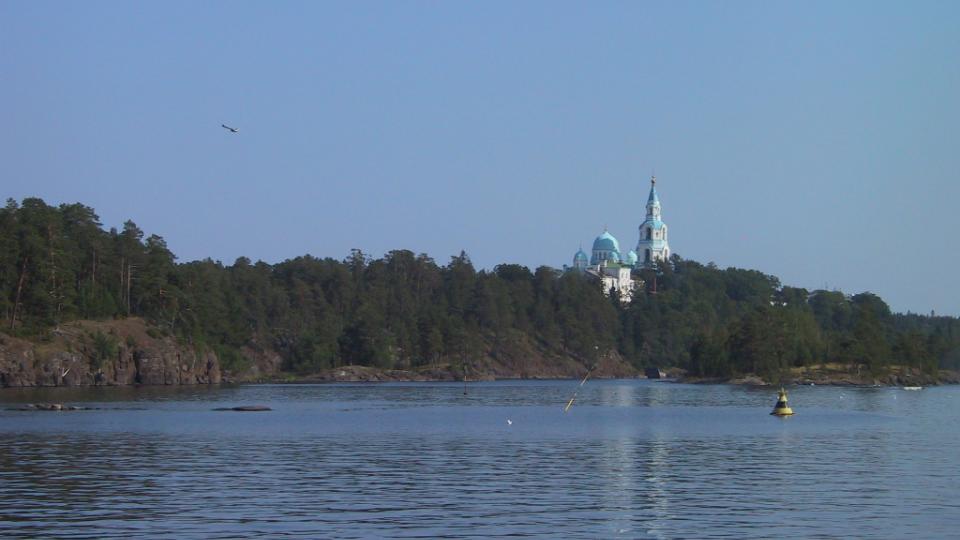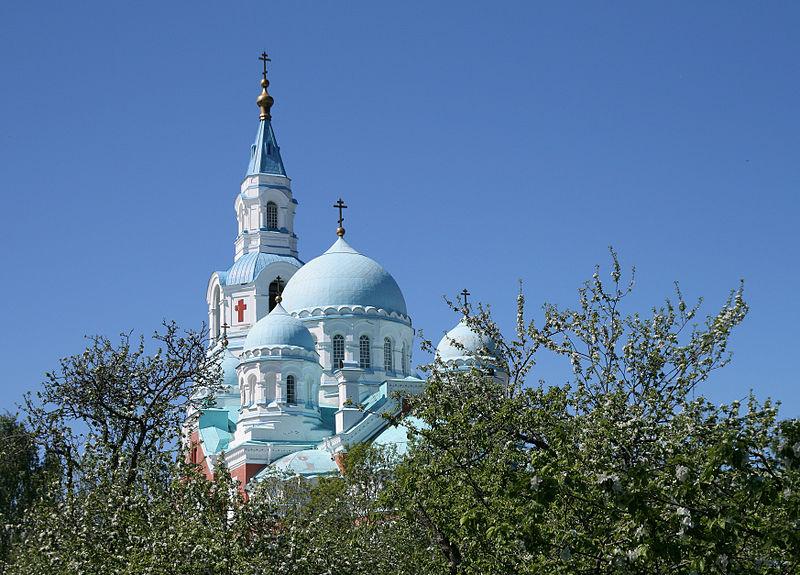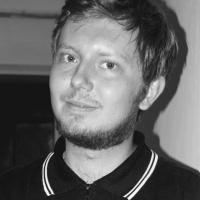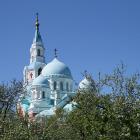Valaam Island is the largest in the Valaam archipelago, situated at 61 degrees latitude in the northern part of Lake Ladoga, the biggest lake in Europe. The island boasts not only an Orthodox monastery, founded in the fourteenth century, but also a unique natural environment.

Valaam island with monastery
Valaam island with monastery
2002 3ABXO3
Click here to view Flickr source.
 This work is licensed under a Creative Commons Attribution-NonCommercial-ShareAlike 3.0 Unported License.
This work is licensed under a Creative Commons Attribution-NonCommercial-ShareAlike 3.0 Unported License.
The island is located in the central taiga sub-zone; its climate is reasonably continental. Apart from the conifer forests, which cover much of the island and are typical of the region, Valaam also harbors trees and plants not endemic to such northerly latitudes: maple, linden, and oak trees, and pear, apple, and cherry orchards, as well as watermelon fields. Most of these species were introduced on the island by monks in the eighteenth and nineteenth centuries. It is possible that earlier monks also cultivated introduced plant species, but no evidence remains, due to numerous fires and destruction that have occurred at the monastery.
Many of the new plants acclimatized successfully, due both to the island’s micro-climate—gentler than that of the mainland—and to constant care and attention. Signs of respectful human interaction with nature can be seen all over the island, but this is most strikingly evident in the artificially cultivated alleys and gardens. Of the three gardens still existent today, the first was laid out in 1810: the Upper (Apothecary) Garden, 1.15 ha in area. Medicinal herbs were grown here, including rose hips, valerian, juniper, and mint.

View from lower gardens
View from lower gardens
2011 Ludvig14
Click here to view Wikimedia source.
 This work is licensed under a Creative Commons Attribution-NonCommercial-ShareAlike 3.0 Unported License.
This work is licensed under a Creative Commons Attribution-NonCommercial-ShareAlike 3.0 Unported License.

View from upper gardens
View from upper gardens
2011 Ludvig14
Click here to view Wikimedia source.
 This work is licensed under a Creative Commons Attribution-NonCommercial-ShareAlike 3.0 Unported License.
This work is licensed under a Creative Commons Attribution-NonCommercial-ShareAlike 3.0 Unported License.
The Middle and Lower Gardens were laid out in 1856 and 1860 respectively. They were named according to their position relative to the lake. Even grapes could be grown in the Lower Garden, due to its agreeable location at the foot of a cliff, where it accumulated warmth from the sun. The soil on Valaam Island is very thin, with an average depth of only 20 cm. To create the gardens, the monks gathered the most fertile soil from all over the island, mixed it together with wood chips, and put down thick layers interlaced with twigs. A nursery was built in the second half of the nineteenth century, where saplings of introduced tree species were cultivated, not just for planting on the island itself, but also for sale on the mainland. The monastery was awarded numerous prizes for its achievements in agriculture and horticulture. At the St. Petersburg agricultural exhibition in 1861, Valaam apples and watermelons received the Great and Small silver medals respectively. Between them, the Valaam gardens produced up to sixty varieties of apple; in harvest years, the monks would gather up to 230 centners.
Since then, the monks and pilgrims have lived on the produce of the fruit and vegetable gardens. The island has become practically self-sufficient; only bread, tea and salt are delivered from the mainland. Part of the island’s produce is even exported to villages on the banks of Lake Ladoga.
How to cite
Suzi, Grigory. “The Man-Made Environment of Valaam Island.” Environment & Society Portal, Arcadia (2014), no. 5. Rachel Carson Center for Environment and Society. https://doi.org/10.5282/rcc/5409.
ISSN 2199-3408
Environment & Society Portal, Arcadia
 This work is licensed under a Creative Commons Attribution-NonCommercial-ShareAlike 3.0 Unported License.
This work is licensed under a Creative Commons Attribution-NonCommercial-ShareAlike 3.0 Unported License.
2013 Grigory Suzi
This refers only to the text and does not include any image rights.
Please click on the images to view their individual rights status.
- Andreev, K. A., N. A. Belousov, and N. I. Ronkopen. Rastitel'nyi mir Valaama. Petrozavodsk: Kareliia, 1982.
- Kondrashova, Kapitolina, Nadezhda Samigullina, and Aleksandr Verzilin. "Sortovoi sostav plodovo-iagodnykh rastenii v sadakh Valaama." In Ozelenenie i sadovodstvo v Karelii, 104–108. Petrozavodsk: karel'skii nauchnyi tsentr AN SSSR, 1990.
- Kondrashova, Kapitolina, and Nadezhda Samigullina. "Istoriia vosstanovleniia sadov Valaamskogo i drugikh monastyrei." In Valaamskii monastyr': Dukhovnye traditsii, istoriia, kul'tura, edited by A.V. Blinskii, 427–31. St. Petersburg: Satisʹ derzhava, 2003.








